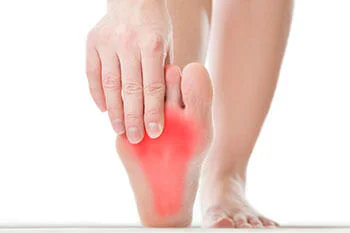Table of Contents
Introduction
Adult Acquired Flatfoot, also known at Posterior Tibial Tendon Dysfunction (PTTD), is a progressive disorder that involves a compromise of the tibialis posterior tendon and ligaments that support the inside arch. The condition most commonly affects women after the age of 40 and is characterized by a noticeable collapse or sagging of the arch with an outward shift of the forefoot/heel and inward shift of the ankle.
4 Clinical Stages
There are four clinical stages of the disorder as the condition worsens, with each stage becoming progressively more disabling. The final stage involves separation of the ankle joint along with all the joints in the hindfoot. It is important to diagnose this problem early and begin treatment to slow the disease process. Surgery maybe needed to ultimately stabilize the arch once the condition has progressed passed the first stage.
Surgical treatment for Stage II PTTD
- Tendon Transfer – Fibers from another tendon, usually the flexor digitorum longus tendon, are inserted to help repair damage. Usually just transferring the tendon is not enough so the following procedures may also be used in conjunction to take strain off of the posterior tibial tendon.
- Osteotomy – A cut in the heel bone (calcaneus) to move the foot structure back into alignment is often used.
- Lateral Column Lengthening – This procedure (Also known as an Evans procedure) implants a small wedge of bone, usually from a cadaver, on the outside of the heel bone to create the proper bone alignment and rebuild the arch.
- Gastrocnemius Recession – This is a common and often necessary procedure that lengthens the calf muscle to reduce stress on the arch and allow the foot to function flat on the ground after arch alignment correction.
- Arthrodesis – Fusing of one or more bones together, usually in the midfoot, to eliminate any joint movement, which stabilizes the foot and prevents any further deterioration or damage.
Surgical treatment for Stage III PTTD
In the early part of Stage III, many of the same above procedures may be used. In the more advanced Stage III, primarily arthrodesis of the rearfoot is used. Additionally if there is any arthritis of the rearfoot joints, joint fusion is typically recommended.
Surgical treatment for Stage IV PTTD
In stage IV, this will almost always involve joint fusion of the rearfoot. Repositioning the foot may take stress off of the ankle, however ankle ligament reconstruction and a total ankle replacement may be recommended in severe cases.




